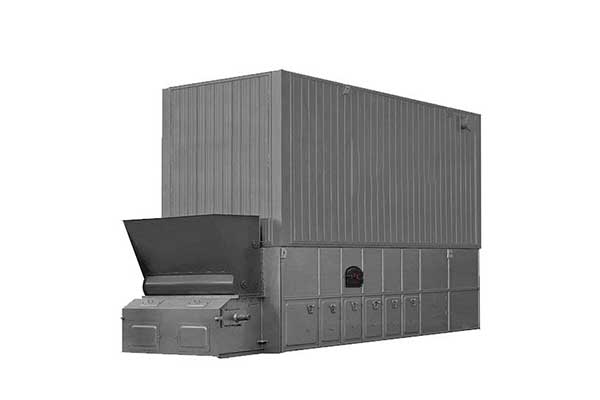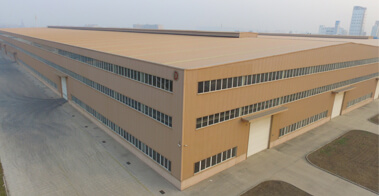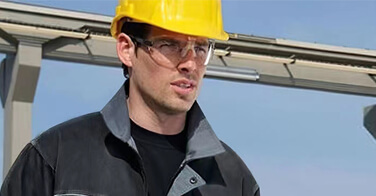The YLW series thermal oil boiler is a horizontal chain grate assembled boiler with a square box-type structure, which consists of an upper body (or upper and lower body) and a lower chain grate, assembled at the construction site. The boiler features a mechanical coal feeding system using a chain grate, with a forced draft fan and an induced draft fan for mechanical ventilation, and a slag extractor for automatic slag removal. During operation, coal falls from the coal hopper onto the chain grate for combustion. High-temperature flue gas reflects to the front of the furnace through rear arching and enters the furnace, where it is heated by radiation heat transfer on the radiant heating surface, followed by convection heat transfer on the convection heating surface. The flue gas then flows to a waste heat recovery boiler or an economizer, an air preheater, and finally enters a dust collector before being discharged to the atmosphere through an induced draft fan and chimney.
Structural characteristics:
-
The radiation heating surface of the boiler body adopts a single furnace or double furnace closely arranged square coil, and the convection heating surface uses a serpentine convection heat transfer tube.
-
The tail end of the boiler is equipped with an air preheater, a waste heat recovery boiler, and an economizer to recover waste heat, reduce the flue gas temperature, improve the boiler thermal efficiency, reduce fuel consumption, and save energy.
-
The convection heat transfer section of the boiler adopts measures such as high-low staggered arrangement, enlarged spacing, and blow and soot blowing devices according to the fuel characteristics to reduce boiler ash accumulation and improve boiler efficiency.
-
The boiler uses high-quality insulation materials and special construction technology for good insulation performance.
-
The butt joints of the heating surface tubes are welded using an automatic gas shielded welding process and equipment, with real-time X-ray online detection for stable and reliable welding quality.
-
Large boilers are partially integrated and assembled on site, with a high integration degree and convenient on-site installation.
Advantage
High efficiency and energy saving:
-
The radiation heat transfer section uses a double closely arranged coil structure, and the convection heat transfer section adopts an S-shaped multi-pass heat exchange design, with an air preheater installed at the tail end.
-
The boiler's tail end is equipped with a highly efficient air preheater or economizer to absorb waste heat in the flue gas, reduce the flue gas temperature, improve thermal efficiency, reduce fuel consumption, and save energy.
-
The specially designed grate and arch ensure uniform and thorough coal combustion with a wide range of coal adaptability.
-
The boiler uses high-quality insulation materials and special construction technology for low heat loss.
-
The establishment of an industrial boiler IOT platform with industrial automation control technology, Internet technology, computer software, and artificial intelligence technology enables remote human-machine interaction and data sharing, realizing automatic control.
Safe and reliable:
-
The boiler body's heating surface adopts closely arranged coils, with sufficient heating surface layout, effectively reducing the surface heat load of the pipes, ensuring safer use of thermal oil.
-
The medium flow path is designed reasonably, with the thermal oil flowing from low (inlet) to high (outlet) to prevent gas accumulation during operation.
-
The boiler has complete safety protection measures, such as multiple interlocking protection and automatic alarm shutdown, to ensure safe and reliable operation.
-
The boiler operates with remote and local multi-point automatic control and is equipped with complete monitoring instruments.
-
The tail convection heat transfer section adopts a special anti-ash accumulation structure design and is equipped with a blowing device to prevent ash accumulation during operation and achieve high heat transfer efficiency.
Tailored design and customized system
According to local environmental protection requirements, appropriate flue gas treatment equipment is installed to ensure that flue gas emissions meet environmental protection requirements.













